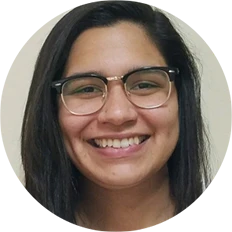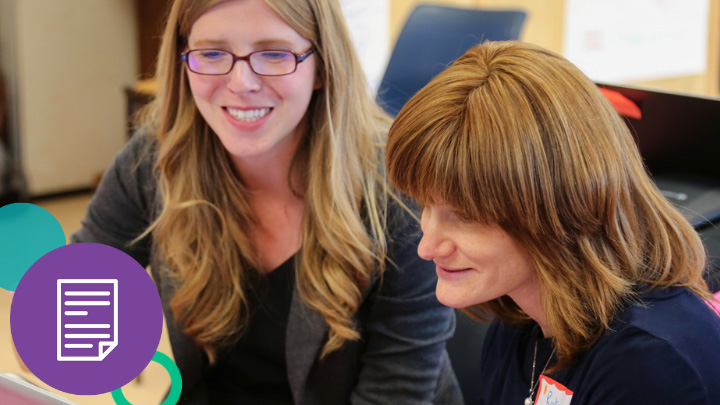In my work as a coach, I have the privilege of working with teachers at all stages of their career and at all levels of practice. While I am of the mindset that there is always something to learn/refine in one’s craft, I also recognize that teachers are overwhelmed and might feel that they do not have the time or space to invest in deep self-reflection and self-growth, especially if that process results in the need to refine and/or make adjustments to their practice.
I am always impressed by teachers who, although already experienced, talented, and hard-working, are dedicated to improving their practice with a coach. This year, I had the opportunity to work with a middle school English teacher with over 20 years of experience who was also nominated as teacher of the year last year. Kate has been implementing goal-setting, and tracking processes for years, but wanted to find new ways to cultivate authentic buy-in and deepen investment in her reading intervention class. She came to our coaching calls with a desire to investigate and improve her goal-setting process by making it more relevant and accessible so that students feel empowered to actively and authentically take ownership of their progress in her class and beyond.
About Kate
In addition to teaching 7th and 8th grade ELA classes, Kate teaches a reading interventions class where she works with Tier 2 students to build their foundational reading skills and fill in any conceptual gaps that might be holding them back from fully accessing grade-level content/instruction. Kate describes herself as a relationship builder who prides herself on her ability to bring her authentic self to the classroom and get students, over time, to share their authentic selves with her. It was clear to me that Kate’s passion for teaching existed alongside her desire to help students to see what they are capable of.
The Problem
As you can imagine, sustaining motivation and engagement and cultivating a feeling of upward momentum and growth in Kate’s intervention class could be a challenge. Many of Kate’s students were facing various complex reading- and writing-related challenges in multiple classes on any given day, and their relationship with reading suffered.
Kate described observing student confidence, motivation, and investment at one of the lowest points she could recall in her instructional career. She sensed the despair and helplessness that her students felt about their perceived inability to get out of “needing her class” and to be considered “at or near” grade level, instead of “below grade level,” by the time they got to high school.
In addition, Kate’s students worried that they might not have opportunities to take special elective classes (like agricultural science, musical theatre, or wood shop) if they were in intervention classes in high school.
Although Kate implemented a semester-wide goal setting process with all of her classes, regardless of the quality of her students’ SMART goals or the consistency in her goal check-in and reflection process, students didn’t always seem as invested in the process as she’d hoped they would be. In fact, most students didn’t seem to believe that they were in control of anything about their learning process or their progress in general. She described many students who seemed to be resigned to their fate in remedial classes, who felt powerless over their need for “extra support,” and for whom low scores in all their classes was the norm to be expected.
The Goal
Kate was looking for a new approach to get students out of their current mindsets, to support students to begin to develop growth mindsets, and to help them see a future for themselves that allows them to not only succeed in their classes, but to excel. Kate was curious what components of the student engagement and goal-setting process she might be missing that were preventing her students from being invested in their own learning and excited to make growth in a time and in a class when the urgency (and pressure) for progress was great.
As a result, Kate and I decided to focus our work together on refining the goal-setting process she uses in her intervention class and to reflect on the impact that this process has on students’ investment, engagement, self-awareness, and self-confidence.
The Coaching Process
In our coaching, we use the framework of Try-Measure-Learn. By encouraging teachers to try something new, measure the outcomes, and implement their learning, we follow an iterative process that allows teachers to explore and get new ideas in a judgment-free space.
For her first step, Try, I suggested Kate explore GOAL (gratitude, objectives, affirmations, lessons) journaling with her classes. Together, we made use of a weekly GOAL template. Kate and I especially liked this strategy because of the way it starts each week’s goal setting process with gratitude and the end of the week check-in and reflection starts with affirmations.
Through the GOAL journaling process, students learn transferable skills like self-reflection, self-management, and self-regulation and acquire independent study skills that are appropriate for their individual needs and preferences. Students are exposed to resources that strengthen their understanding, their ability to retain and apply information to new contexts, and their ability to create and reflect on their own goals.
As Kate began implementing this strategy in her reading interventions class, she structured her reading intervention class’ goal-setting and process-tracking cycle to be two weeks long to help keep goals top-of-mind, rather than the full semester or year process she had been using.
Try
In her intervention class, Kate had students make two to three goals per cycle and met with students individually at the end of each two-week period to review their data, reflect on their goals and progress, and consider next steps and new goals.
Biweekly meetings served several functions for Kate and her class. They:
- Gave Kate the opportunity to get more personalized information about each student, how they learn, and what they need.
- Let each student privately evaluate their process, identify new strategies or approaches that might be more relevant, and recognize and celebrate the progress that they have made so far.Kate has created a process to have students find, capture, and analyze their own data prior to their two week goal check in meetings. By teaching students where and how to access their data and how to do a preliminary reflection of this progress independently prior to the meeting, Kate sped up and deepened the data reflection process and significantly improved the quality of the conversations that they have together.
- Helped Kate identify opportunities to publicly celebrate individual and whole class growth
One way Kate found to help her students visualize their progress was by creating a class bulletin board called “Skill Building.” Kate had students color bricks to represent their growth increments to help “build their wall.” Seeing their progress visually represented was monumental.
Measure
Kate was careful to emphasize the importance of growth rather than whether or not a particular goal was met. In her work, she has observed that unless students see immediate, large gains, they often do not register smaller, incremental progress as worth celebrating. One of her strategies was to counter that by building up the narrative that all growth is valuable growth and that all growth gets someone closer to where they want to be than they were before.
Kate recently got back the mid-year benchmark assessments from her class, and they made 20% greater growth than average for their grade. They also made 1 and ½ years of growth by mid-year according to their iXL assessment.
Learn
Nearly every student has been consistently making significant growth since approximately their second GOAL cycle. Kate stated that she believes the biggest difference between the implementation and roll out of her GOAL work this year in comparison to her goal-related instruction in previous years is the focus and emphasis on gratitude. She has observed the positive and hopeful tone that the GOAL journaling process has created, helping transform her classroom into a collaborative community where everyone is invested in each other’s strengths and celebrations.
As Kate works on building a growth mindset (and new internal narrative for her students), her students’ confidence has slowly been improving and she has seen an increased investment in their work. For some students, this was one of the first times in their recent schooling careers where they have felt success. Kate has used her authentic approach, combined with her extremely high but still realistic expectations of what her students can accomplish, to help students see “the light at the end of the tunnel” in a way that they had not been able to before.
Try…Again
As a coach, my job is to help Kate to consistently reflect on the implementation of these practices and to find ways to streamline, strengthen, and improve her practice and the student experience. Now, Kate engages in reflection on these topics and often finds solutions to make things simpler and easier for herself and her students. She frequently asks students for their thoughts and feedback on class structure, lessons, and other resources she uses to ensure that they have a voice and choice in their experience.
Kate still worries whether students will eventually disengage, lose interest, or find this process less meaningful. However, because students are seeing their hard work in class directly improve their growth, I doubt this will happen. Now, more than ever, students are driven by quick results. Kate has cultivated a classroom mindset that helps students understand the value beyond instant gratification while also creating real achievement that results in significant growth, progress, and forward momentum in each student’s life. They are closer than ever before to feeling a sense of accomplishment, competence, and confidence in school.
Kate’s work establishing buy-in within a time and space where many students might feel hopeless was and still is a daily challenge. I was honored to have the chance to be her coach and provide her with resources and a safe space to learn. We both had the goal of making goal-setting work for her class and with a few tweaks to her practice and a new way of thinking, Kate (and her class) were able to make progress in leaps and bounds–all by starting small.
Coaching gives educators the chance to develop their skills within a framework that encourages them to try new things, measure their success, and continually improve their practice. By establishing trust, mutual respect, and a sense of hope in the coaching process, teachers like Kate get the individual, differentiated support they need to do the same for their students.
If you would like to learn more about working with an instructional coach, connect with BetterLesson to get started.








